Click User IDs > New.
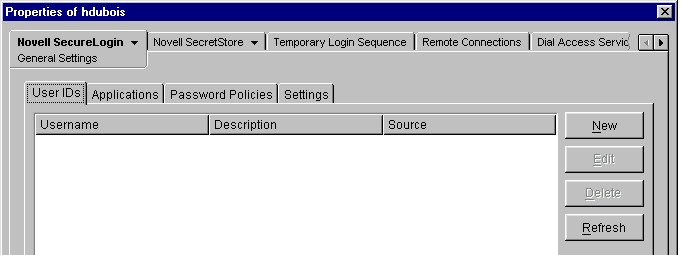
Type a descriptive name (for example, DeskUp) in the New User ID dialog box, then click OK.

A user ID consists of whatever is required of a user to authenticate to a network or directory. For example, authentication might require a password and PIN. User IDs are especially useful when two or more applications can use the same credentials.
Scenario: Sharing a User ID. On the Applications page, you added GroupWise.exe, a Windows application. You also added gmail.digitalairlines.com, a Web application. At the ID page, you create a user ID named GroupWise. You link both applications to this user ID. Authorized users can now use single sign-on to access GroupWise® from a Windows environment (grpwise.exe) or a Web environment (http://gmail.digitalairlines.com).
If you change the password for one application, SecureLogin updates the password in one location. All applications that use that password automatically get the update.
You use the User ID feature to do the following:
You manage user IDs by using the SecureLogin snap-in to ConsoleOne, Active Directory Users and Computers in MMC, SecureLogin Manager, or the SecureLogin workstation client.
Using the User ID tab of the object or user properties, you can define a user ID that several different applications can share. For example, gmail.novell.com and grpwise.exe can both use the GroupWise user ID.
Click User IDs > New.

Type a descriptive name (for example, DeskUp) in the New User ID dialog box, then click OK.

A username variable displays the name that a user ID is associated with.
(Conditional) To add a username variable to an existing user ID, click the user ID, then click Edit.
For example, click DeskUp in the Description column. As the following figure illustrates, the User ID dialog box appears. If you are adding a new user ID, this dialog box appears as soon as you have created the user ID.
This dialog box is used to manage the variables (for example, username and password) associated with a login.
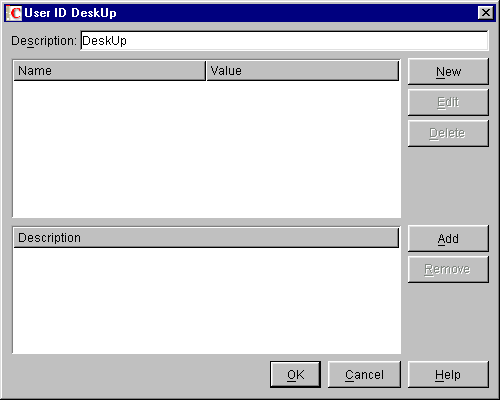
Click New, type a name (for example, Username) for the new variable, then click OK.

Type a value (for example, hdubois) for the new variable, then click OK.

After you enter a variable and value for a user ID, you return to the User ID application name dialog box. You can then add other variables and values if you want to.
Click New.

In the New Variable dialog box, type Password, then click OK.

Type and confirm the new password, then click OK.
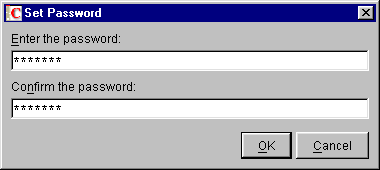
If you are using the properties of your own User object, the user ID values are saved to the local cache and a directory cache.
The following figure illustrates a completed user ID, with the Username and Password variables along with accompanying values for each:
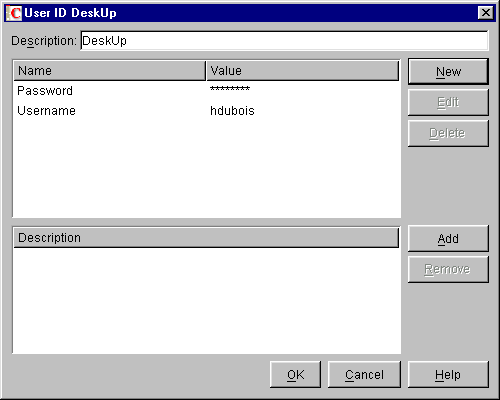
(Optional) Link the user ID to an application by clicking Add, selecting the application, then clicking OK.
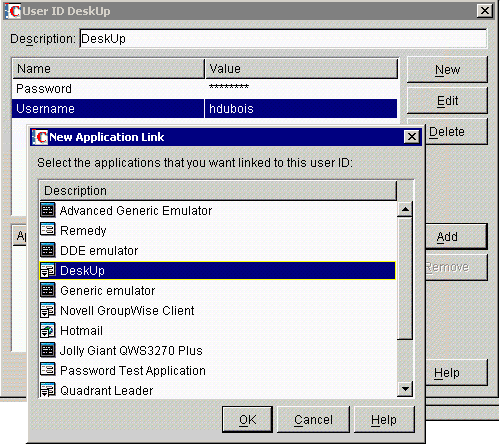
You can link a user ID to one or more applications. Applications that are linked with the same user ID share the same login data. If you change a password for an application, that change is stored in one place. All linked applications then use the updated data for single sign-on logins.
Save the user ID by clicking OK, then save the data by clicking Apply or OK.
The following figure illustrates the new user ID:

You can change any variable, regardless of how it is named. Those variables that contain "password" in the name (or key) use the password change dialog box. Change all other variables by using the regular edit-variable dialog box.
Click the user ID, then click Edit.
Click the Password line, then click Edit.
Enter and confirm the new password, then save changes.
Click the user ID, then click Edit.
Click the variable (for example, Username) line, then click Edit.
Type a name, then click OK.
Save the changes.
Click a user ID, then click Delete.
You can't delete an inherited user ID.
Save the data by clicking OK or Apply.